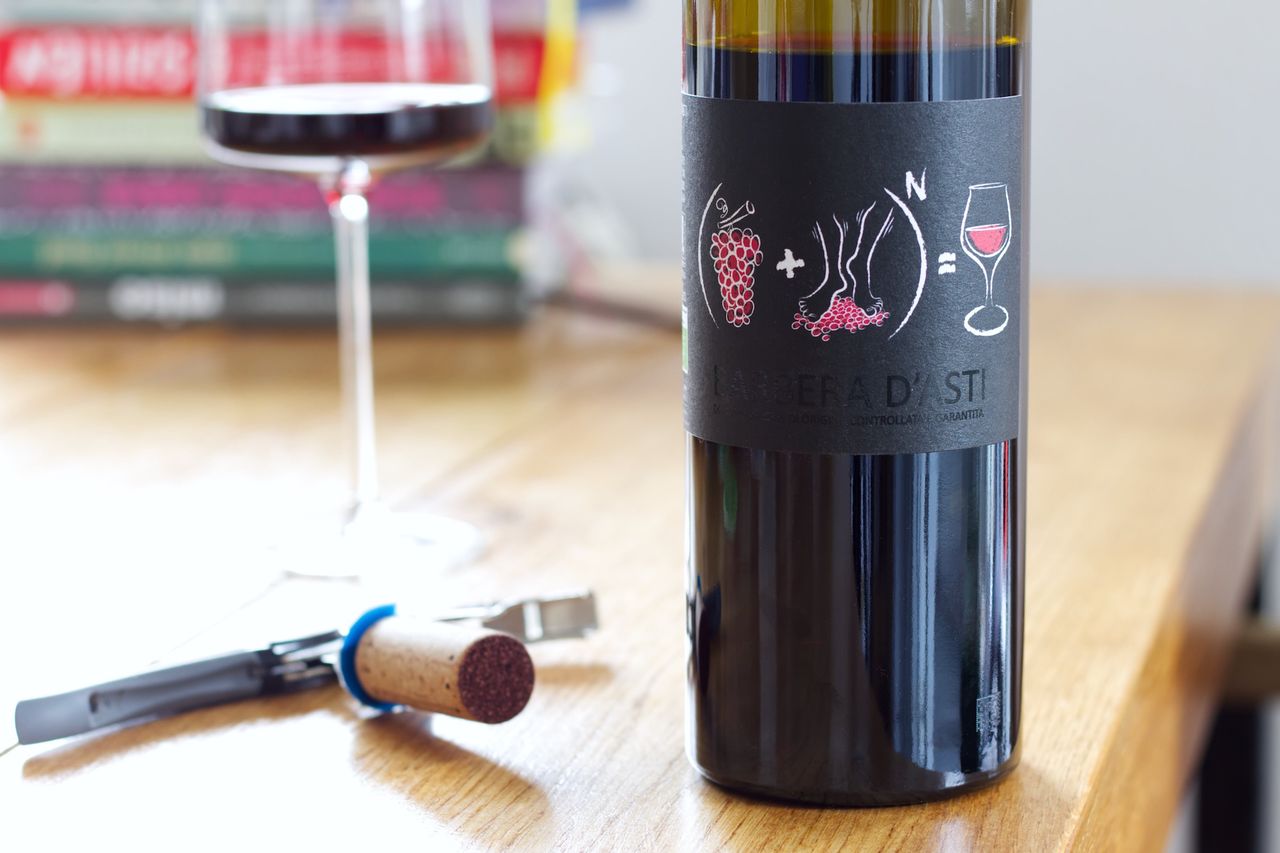Adriano Grasso - Barbera d'Asti 2020
We drink a bottle of Barbera d'Asti 2020 from Adriano Grasso from Piedmont, which shows that some wines simply deserve to be paired with food.

So here it is, the last wine from my trade fair order from last November. The package lasted longer than I had expected. Adriano Grasso had only four wines on his table, and this one was the smallest of the bunch. The reason this particular bottle made it into my cart is because there’s a big gap in my wine collection. Uncomplicated food companions from Italy are rare in my purchases, and I take issue with that, especially when I’m in the mood for such a bottle. And that, unfortunately, happens more often than I’d like. So, it’s high time to address this problem. Piedmont in northwest Italy is probably most associated with Nebbiolo, and therefore primarily with Barolo and Barbaresco. However, Barbera actually occupies the largest share of the vineyard area, and as the name suggests, Barbera d’Asti has enjoyed DOCG status since 2008 when grown around Asti (and, to be thorough, in the province of Alessandria). A few kilometers south of Asti, in Calosso, lies the winery of Adriano Grasso, who manages about 6 hectares of vineyards here. Like almost all winemakers featured on this blog, he farms his vineyards organically and he has been certified since 2020. The grapes are pressed at the winery in an old basket press before the juice is fermented with natural yeasts in stainless steel and then aged in used wood.
There’s fruit on the nose, herbs, and a bit of alcohol. The wine needs a few moments, and then the 14.5 percent alcohol is well integrated. But when drinking, that’s immediately forgotten anyway. Firstly, because you no longer notice the alcohol content (and no, not because you’re already tipsy), and secondly, because there’s even more fruit marching across the tongue than on the nose. This is one of those feel-good wines. There’s more and more fruit, cherry, plum, berries, a bit of warmth, and those herbs. The tannins have grip, but they’re so softened by all the fruit that the overall effect is almost silky. With each glass, I think this could be truly wonderful with food. Not that the wine isn’t enough on its own, but it somehow makes you crave pasta.
After a night in the fridge, the fruit has become darker, more purple than red, more plum than cherry, and even sweeter than before. There are dried fruits and spice on the nose, and at the same time, the wine grips more. The acidity, juiciness, and tannins are more pronounced. Meanwhile, the bacon for the Amatriciana is slowly losing its fat in the pan and getting leaner and leaner. A fate I fear we will not share. For those who can’t resist pointing out that bacon is wrong here and only air-dried pork jowl would lead to the correct result, I challenge you to find guanciale in my village. I wish you the best of luck. Besides, the smoked meat from my favorite butcher is a worthy substitute. A small sip of wine as a culinary offering loosens the browned bits, and a large gulp for the cook quenches the thirst. At this point, it doesn’t matter how authentic the whole thing turns out to be. It was a very good idea to save most of the bottle for the meal. You get the feeling that the pasta and wine are gradually coming together more and more, even as you stir the noodles, taste the sauce, and mix everything together. Every sip, every forkful, each time it gets a little better. This is one of those combinations that is much more than the sum of its parts. It just fits. The freshness, the fruit, the heat of the pasta, the fat, the bit of smoke that doesn’t really belong there. It’s like a vacation right there on your plate. Totally simple and yet incredibly complex. Brilliant.